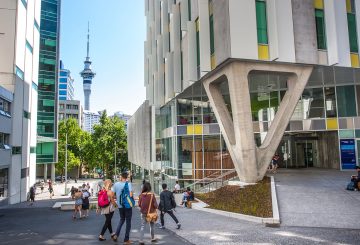Sa linggong ito ay nagmamarka ng ika-50 anibersaryo ng ACC (Accident Compensation Corporation), isang organisasyon sa New Zealand na nagbibigay ng komprehensibong, walang pagkakamali na saklaw ng pinsala. Gayunpaman, ang milyon ay nagdulot ng debate tungkol sa pangangailangan para sa pagbabago sa loob ng sistema.
Ang ACC ay itinatag noong dekada 1970, kasunod ng isang pagsisiyasat ng Royal Commission na pinamunuan ng hukom ng korte Suprema na si Sir Owen Woodhouse. Ang pagsisiyasat ay nagdudulot ng hindi kasiyahan ng mga manggagawa sa hindi sapat na kabayaran para sa mga pinsala Sinasaklaw ng orihinal na Batas ng 1973 ang mga pinsala sa trabaho at aksidente sa kotse, at isang pagbabago noong sumunod na taon ay pinalawak ang saklaw
Sa paglipas ng mga taon, ang bilang ng mga claim na pinangangasiwaan ng ACC ay nadagdagan nang malaki, mula sa ilang daang mga pagtatalo sa sibil at halos 5,000 mga claim sa kabayaran ng manggagawa bawat taon hanggang sa humigit-kumulang 2 milyong mga claim taun-taon. Pinalawak din ang saklaw ng saklaw upang isama ang mga pinsala sa palakasan at sensitibong pag-aangkin, tulad ng pang-aabuso sa pangangalaga.
Gayunpaman, ang mga kritiko ay nagtatalo na ang sistema ay may makabuluhang puwang, na may halos isang porsyento lamang ng mga sensitibong pag-aangkin na tumatanggap ng Kinikilala ng abogado at mananaliksik ng ACC na si Warren Forster na habang ang sistema ng ACC ay isa sa mga pinakamahusay sa buong mundo, hindi ito gumagana sa lahat ng mga kaso at nabigo na magbigay ng hustisya para sa marami.
Pinupuna ni Don Rennie, isang ligal na consultant sa orihinal na ACC, ang kasalukuyang samahan, na inihambing ito nang hindi kanais-nais sa malalaking kumpanya ng seguro. Naniniwala siya na ang pagbabago ng ACC mula sa isang komisyon sa isang korporasyon noong 1982 ay humantong sa paglipat sa pagtuon mula sa mga pangangailangan ng mga nasugatan patungo sa mga alalahanin sa pananalapi.
Hindi sumasang-ayon ang punong ehekutibo ng ACC na si Megan Main, na nagsasabi na sa kabila ng mga pagbabago sa paglipas ng mga taon, nananatili ang orihinal na layunin ng samahan na Kinikilala niya ang pangangailangan para sa mga pagpapabuti, lalo na dahil ang pagtaas ng bilang ng mga claim ay nagbibigay ng presyon sa mga facilitator ng rehabilitasyon. Gayunpaman, ipinagdiriwang din niya ang natatanging komprehensibong, walang kasalanan na pabalat ng pinsala ng ACC, na hindi katutugma ng anumang ibang bansa.
Sinusuportahan din ng Main ang pagbawas sa serbisyo sa publiko ng gobyerno at plano na bawasan ang badyet ng ACC ng 6.5%. Tinitiyak niya na ang mga pagbawas na ito ay hindi makakaapekto sa mga kawani na nakaharap sa customer at naglalayong alisin ang pag-double at hindi kinakailangang mga proyekto






























































